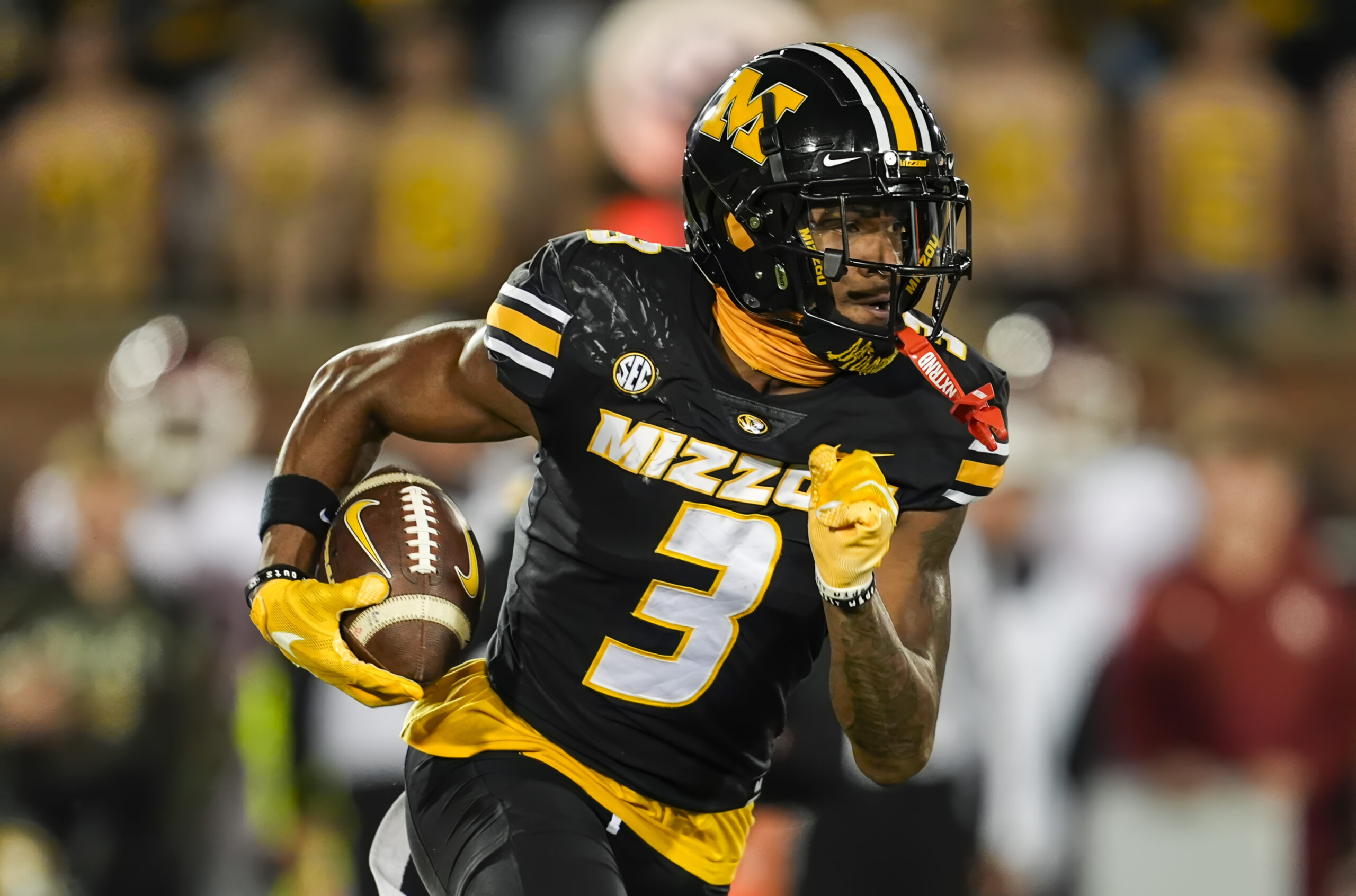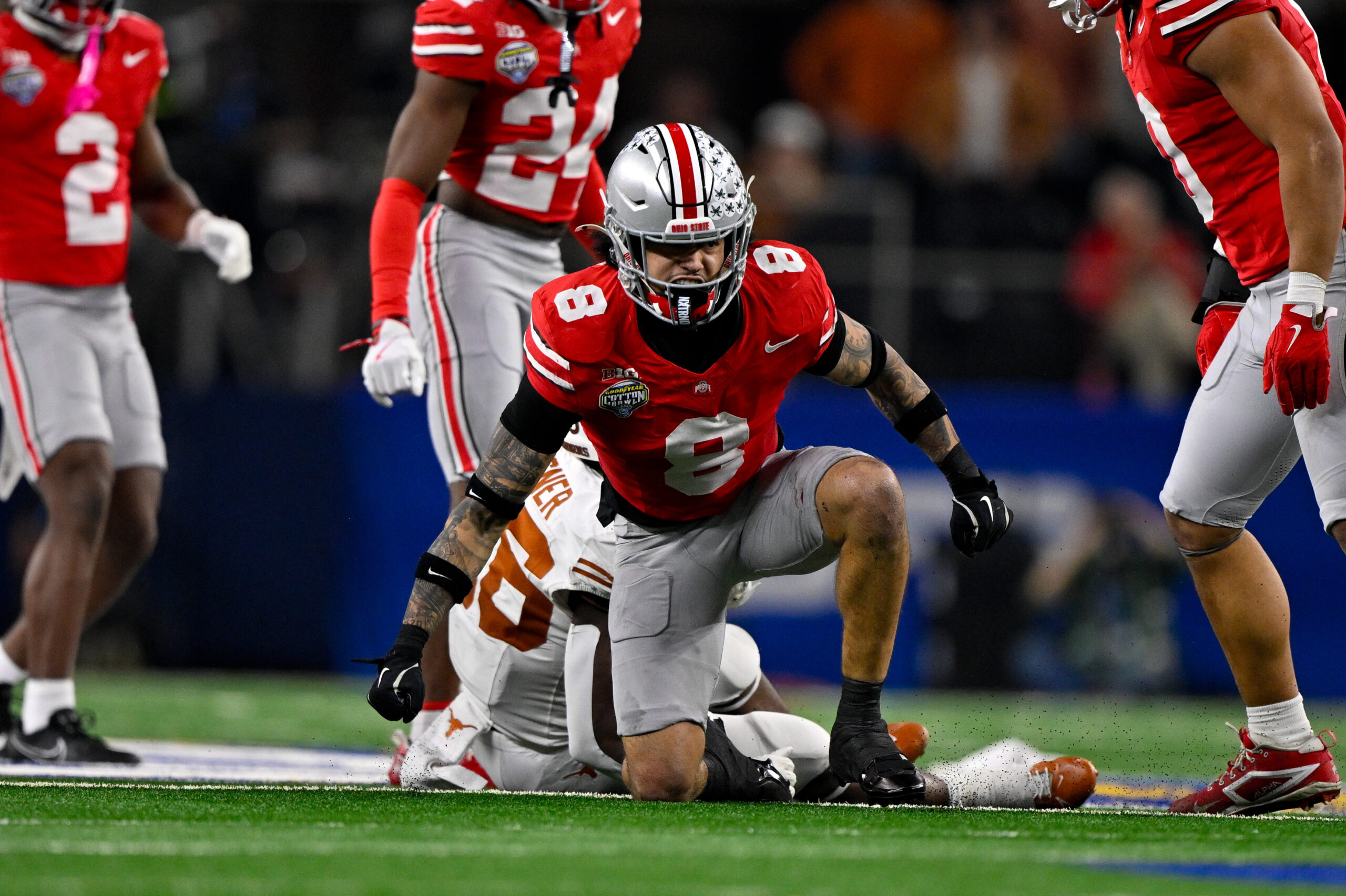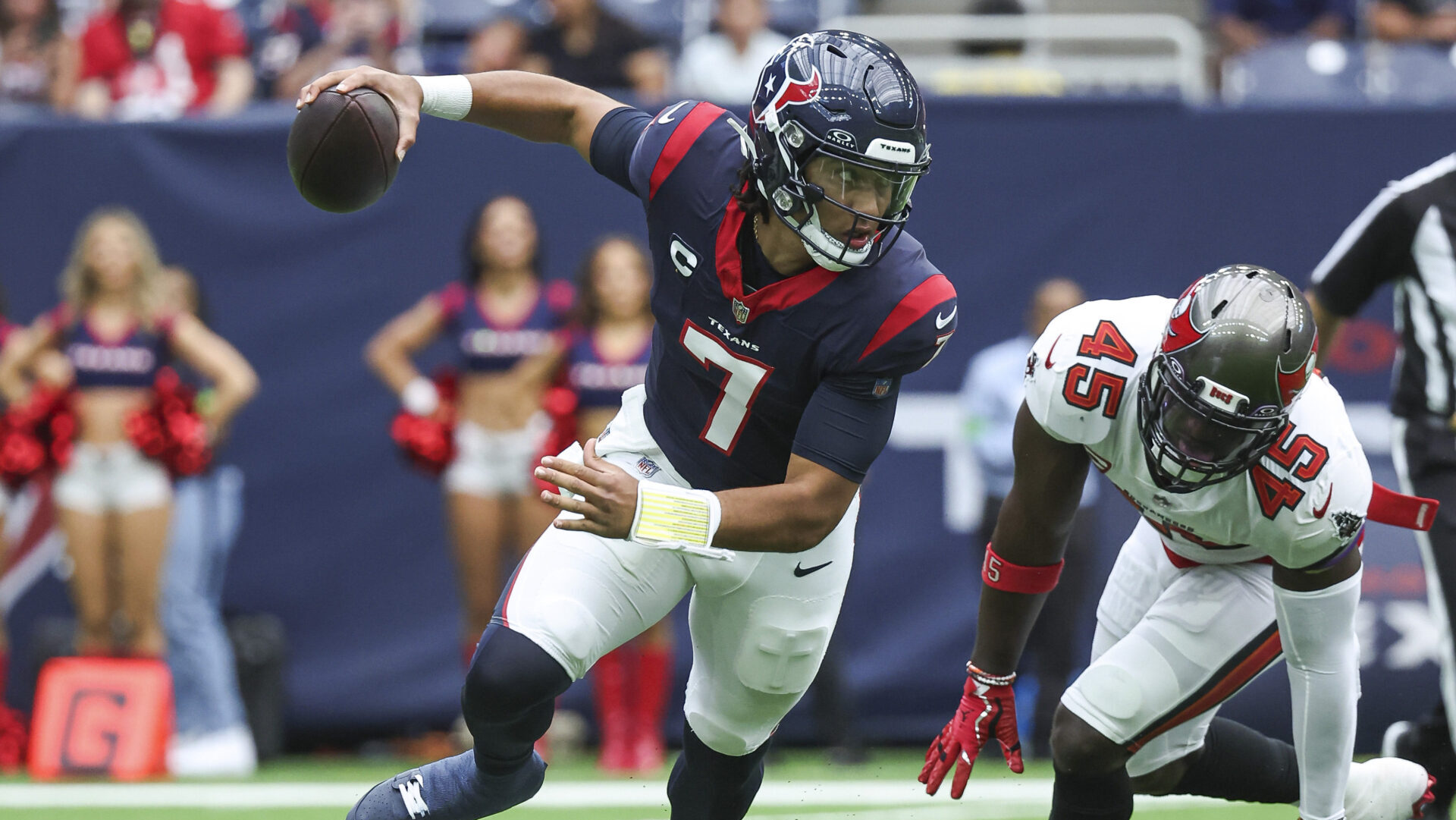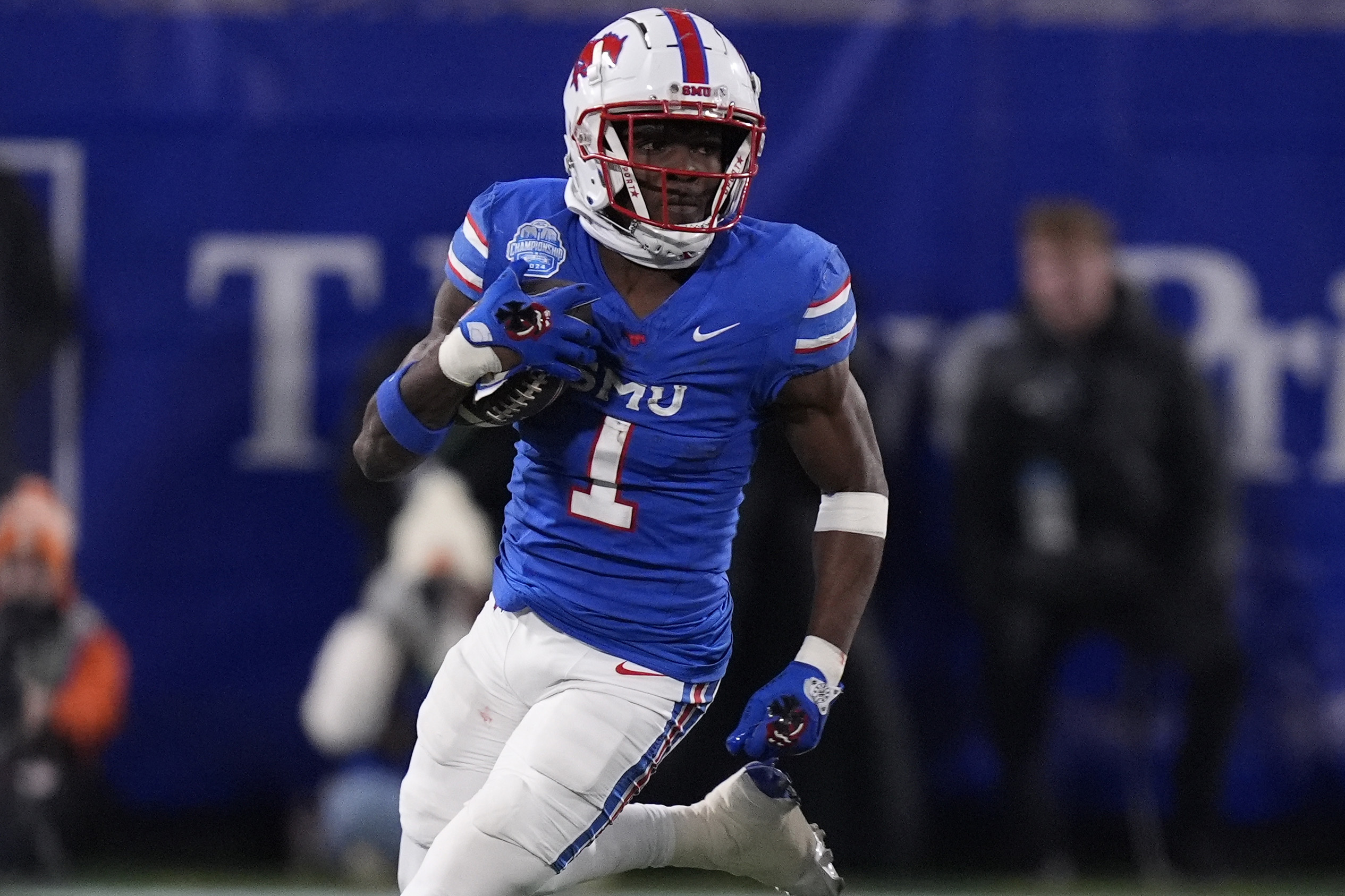NFL Draft
2/14/25
7 min read
2025 NFL Draft: Why Georgia's Jalon Walker Is NFL's Next Great Defensive Chess Piece
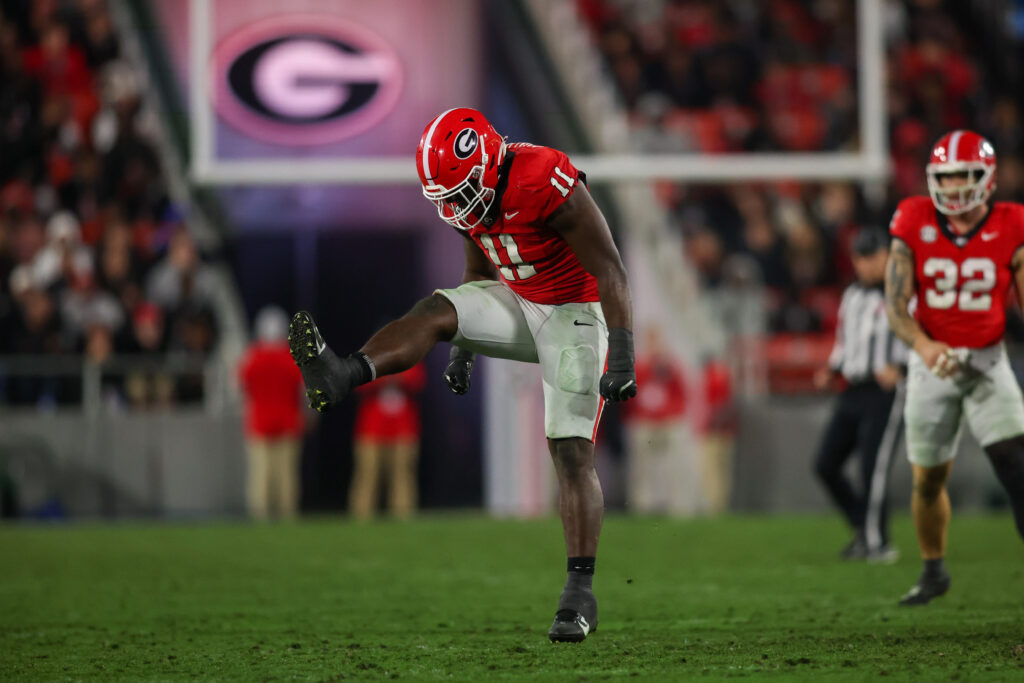
The 2025 NFL Draft offers franchises seemingly endless opportunities to add quality pass rushers to their ranks. They’re available in this year’s class in all shapes and sizes, whether you’re searching for a rush linebacker, a base end, a penetration interior player, or a hybrid mix.
This vast menu of defensive linemen will set the stage for fascinating marriages between prospects and teams. The choice won’t just paint a picture of a team wanting to improve its pass rush; it will tell a story about the team's vision for its defense.
You wouldn’t take someone like Marshall’s Mike Green or Boston College’s Donovan Ezeiruaku and play them as a base end overtop of tackles all the time, just like you wouldn’t draft Arkansas’ Landon Jackson and ask him to play in a wide-nine scheme. Penn State’s Abdul Carter is, rightfully, perceived to be a hybrid mix that could shine in nearly any opportunity as a universal talent.
Then, there’s Georgia’s Jalon Walker.
Walker is not a universal talent but should be considered a hybrid mix of traits, skills, and potential fits. And for some teams, that can be a scary proposition. Accordingly, Walker has become a polarizing player. Here at The 33rd Team, we’re in. On the heels of the Senior Bowl, Walker ranked 10th in our latest big board update.
Walker isn’t the tallest or the longest pass rusher in this class. At the NFL Combine, that honor may go to Texas A&M’s Shemar Stewart. He posted an 83.5” wingspan at the Senior Bowl. Walker isn’t the most fluid or the most flexible running the arc. These are traits that usually get associated with top-pass rusher talents.
However, at a listed 6-foot-2 and 245 pounds, Walker boasts explosive power that is potentially unrivaled among his peers. His natural leverage due to his shorter frame allows him to play under linemen's pads and create displacement with his rushes.
Walker takes advantage of this power and displacement to help him reduce the severity of the angles he needs to play off of to reach the quarterback. And, thanks to consistently well-placed hands, Walker often wins first contact with his power reps through a long arm stab or a speed-to-power conversion.
You can’t tell Walker's story by only framing his pass-rush profile, although a 19.7 percent pressure rate in 2024 certainly isn’t a bad place to start.
Penn State’s Abdul Carter posted a 19.5 percent pressure rate for comparison. James Pearce Jr. of Tennessee leads the pack for the upper tiers of the 2025 NFL Draft’s edge class with a pressure rate exceeding 23 percent. Walker’s alignment versatility, diversity of skills, and hybrid skills are a big piece of who he is.
It is important to recognize that some of Walker’s reps from Georgia won’t correlate to a consistent role at the NFL level. The Bulldogs would mug Walker into interior gaps as a linebacker and have him shallow stalk and spy the quarterback.
They’d implement this rush technique while attacking with three other pass rushers in a traditional rush against mobile quarterbacks, allowing Walker’s explosive burst and trigger to close ground when those quarterbacks broke containment of the pocket.
A role like this can be helpful in situational opportunities but shouldn’t be considered a consistent week-to-week opportunity. Yet his resume still shows a robust range of alignment and stylistic rush wins.
Walker’s off-ball work as a traditional linebacker was helpful for Georgia, but playing him as a stack player off the ball does play away from most of his strengths.
If you’re looking to project Walker to the NFL, you likely aren’t looking at these reps with much excitement. That said, it has still groomed him for a role available in several stops across the league.
While Walker won't be a good fit for every scheme based on his skill set, his unique combination of skills makes him a tailor-made fit for the hottest defensive scheme in football.
Look around the NFL right now, and you’ll find Mike Macdonald’s simulated pressure scheme putting roots down across the landscape. Macdonald himself is the head man in Seattle. Before the Seahawks job, Macdonald was the defensive coordinator in Baltimore.
That 2023 Ravens staff has yielded several defensive coordinators — Baltimore replaced Macdonald with Zachary Orr. Dennard Wilson was hired in Tennessee as the Titans’ defensive coordinator last offseason, the same as Anthony Weaver in Miami. Weaver was already a finalist for the New Orleans Saints head coaching job in this coaching cycle. Just a few years prior, Jim Harbaugh replaced Macdonald as his defensive coordinator at Michigan with Jesse Minter, who has followed Harbaugh to the Chargers.
There are more branches of this ideology, of course. Rex Ryan’s Jets defenses from more than a decade ago influenced Macdonald’s philosophy. Super Bowl-winning defensive coordinator Vic Fangio likes to rush a non-traditional four and attack out of various static pre-snap fronts and shells. And no one is blending the extremes of simulated three and four-man pressures with actual blitzing teams to death, like Minnesota, courtesy of Brian Flores.
These schemes and defenses have the infrastructure and opportunity to turn Walker into a superstar.
The whole goal of simulated pressures is to showcase rushing more than four defenders on any given snap to manipulate protection schemes. But, at the snap of the ball, only four rushers indeed attack — just not the traditional four-down linemen. This means you may be rushing a nickel defender off the edge, dropping the opposite rush linebacker into a zone, and rotating the entire coverage shell behind it to disperse the field.
If your rush linebacker isn’t comfortable or bred to play in space as a shallow flat or hook defender, you may be vulnerable to an opposing quarterback taking vacant space to that defender’s zone responsibility.
Can the defender plaster a hook route or expand properly to leverage a flat? Do they have a feel to squeeze their zone landmark against a nubbed tight end with no other threats to the flat if the back goes away?
Defensive coordinators who want to run simulated pressure schemes must be comfortable with these kinds of questions if they want their rush defenders off the edge to drop into coverage to get a “non-traditional” four-man rush.
In the case of Walker, he played nearly 180 snaps in coverage this season. He played just 15 more snaps rushing the passer as he did in space. Some of this is because of where he took his snaps — 311 of them came as some kind of box defender, whereas 249 came as an edge defender on the line of scrimmage.
These numbers should skew more heavily toward playing on the edge in the NFL. However, the exposures he had this season to play in space as a traditional stack backer and as an edge defender dropping have given him unique experiences to play in these sim pressure defenses.
The only other edge prospect who can say the same is Carter, an actual off-ball linebacker for his first two seasons at Penn State and played just 132 snaps on the edge in his first two seasons.
Projection is a significant part of Walker's story as a draft prospect for those who are willing to buy what Walker is capable of and willing to rank him highly. Defenses are aspiring to force opposing offenses to process more and more information post-snap. And a player like Walker, who can line up as a mugged backer, on the second level as an actual stack backer who brings pressure from depth, or a rush linebacker playing on the edge, can achieve the kind of “spinner” status for opposing protection schemes that must be logged and planned for on every given snap.
When you factor in Walker’s pass rush resume as a traditional rusher off the edge, this is no longer your typical positionless chess piece defender. Even if it were, there are more destinations across the league to properly equip such a talent than ever before.
Make sure to check out our new home for all of our NFL Draft content.


